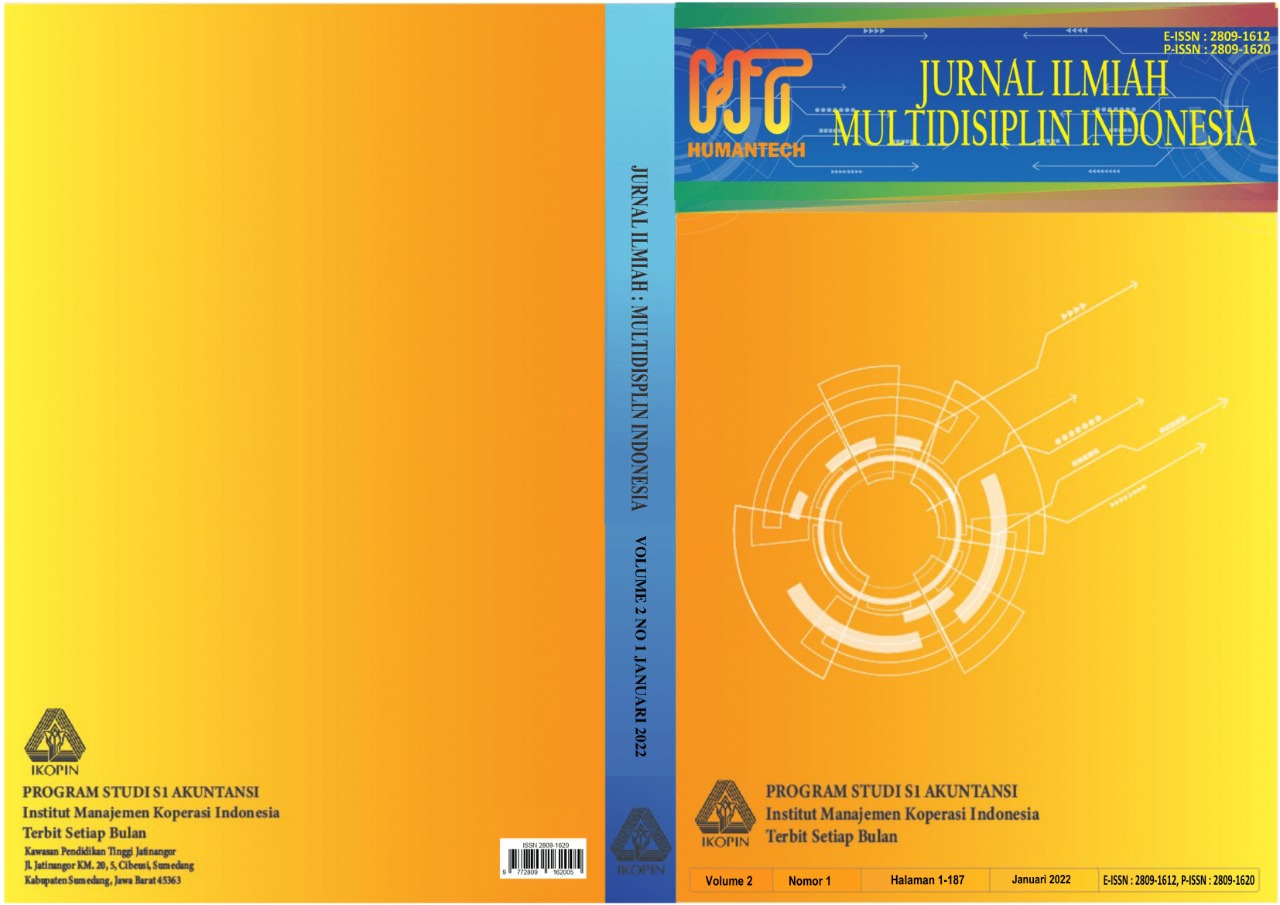A BIBLIOMETRIC ANALYSIS ON WORK PRODUCTIVITY
Main Article Content
Abstract
Penelitian ini bertujuan untuk mengkaji lebih mendalam mengenai Work Productivity atau Produktivitas Kerja. Produktivitas kerja karyawan yang tinggi dapat diperoleh apabila karyawan ada keinginan untuk meningkatkan kemampuan yang dimiliki, sehingga tujuan perusahaan akan terlaksana secara efektif dan efisien dan dipengaruhi oleh beberapa faktor yaitu tingkat pendidikan, pelatihan, keterampilan, disiplin, sikap, etika kerja, motivasi,lingkungan kerja, sarana produksi dan kesehatan. Analisis penelitian yang digunakan dalam penelitian ini adalah blibliometrik. Analisis Literatur dalam Penelitian ini menggunakan database pada situs Science Direct yang dilakukan pada tahun 2018 – 2024. Hasil penelitian mendeskripsikan analisis Co-authorship, Co-occurrence. Penelitian ini diharapkan dapat menjadi referensi untuk penelitian selanjutnya terkait tema work productivity atau Produktivitas Kerja.
Article Details
References
Ali, S. Z., & Qureshi, I. A. (2021). Anticipated versus unanticipated productivity shocks and hours-worked. International Review of Economics and Finance, 72(August 2020), 547–572. https://doi.org/10.1016/j.iref.2020.12.005
Blanco, C., & Raurich, X. (2022). Agricultural composition and labor productivity. Journal of Development Economics, 158, 102934. https://doi.org/https://doi.org/10.1016/j.jdeveco.2022.102934
Börsch-Supan, A., Hunkler, C., & Weiss, M. (2021). Big data at work: Age and labor productivity in the service sector. Journal of the Economics of Ageing, 19(March). https://doi.org/10.1016/j.jeoa.2021.100319
Braganza, A., Chen, W., Canhoto, A., & Sap, S. (2021). Productive employment and decent work: The impact of AI adoption on psychological contracts, job engagement and employee trust. Journal of Business Research, 131(August 2020), 485–494. https://doi.org/10.1016/j.jbusres.2020.08.018
Fahimnia, B., Sarkis, J., & Davarzani, H. (2015). Author ’ s Accepted Manuscript. In Intern. Journal of Production Economics. Elsevier. https://doi.org/10.1016/j.ijpe.2015.01.003
Fan, D., Lo, C. K. Y., Yeung, A. C. L., & Cheng, T. C. E. (2018). The impact of corporate label change on long-term labor productivity. Journal of Business Research, 86(February 2017), 96–108. https://doi.org/10.1016/j.jbusres.2018.01.048
Fan, Y. (2023). Collaborative integration, workplace flexibility and scholarly productivity: Evidence from the COVID-19 outbreak. Quarterly Review of Economics and Finance, 87, 1–15. https://doi.org/10.1016/j.qref.2022.11.002
Fischer, K., Reade, J. J., & Schmal, W. B. (2022). What cannot be cured must be endured: The long-lasting effect of a COVID-19 infection on workplace productivity. Labour Economics, 79(September), 102281. https://doi.org/10.1016/j.labeco.2022.102281
Hernæs, E., Kornstad, T., Markussen, S., & Røed, K. (2023). Ageing and labor productivity. Labour Economics, 82(March). https://doi.org/10.1016/j.labeco.2023.102347
Nasir, M. A., Wu, J., Howes, C., & Ripley, H. (2022). Asymmetric nexus between wages and productivity in the context of the global financial crisis. Journal of Economic Behavior and Organization, 198, 164–175. https://doi.org/10.1016/j.jebo.2022.04.001
Norfai. (2021). Kesulitan dalam Menulis KaryaTulis Ilmiah. Penerbit Lakeisha.
Shujahat, M., Sousa, M. J., Hussain, S., Nawaz, F., Wang, M., & Umer, M. (2019). Translating the impact of knowledge management processes into knowledge-based innovation: The neglected and mediating role of knowledge-worker productivity. Journal of Business Research, 94(October 2017), 442–450. https://doi.org/10.1016/j.jbusres.2017.11.001
von Schéele, F., Haftor, D. M., & Pashkevich, N. (2019). Cognitive time distortion as a hidden condition of worker productivity. Journal of Business Research, 101(June 2018), 591–596. https://doi.org/10.1016/j.jbusres.2018.11.002
Zhang, W., Tocher, P., L’Heureux, J., Sou, J., & Sun, H. (2023). Measuring, Analyzing, and Presenting Work Productivity Loss in Randomized Controlled Trials: A Scoping Review. Value in Health, 26(1), 123–137. https://doi.org/10.1016/j.jval.2022.06.015

